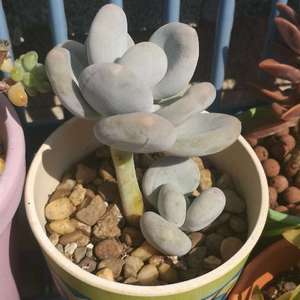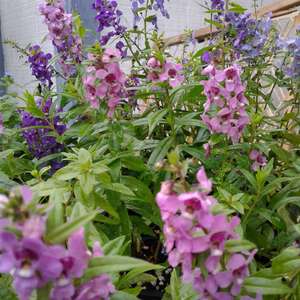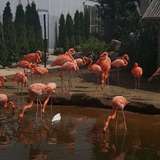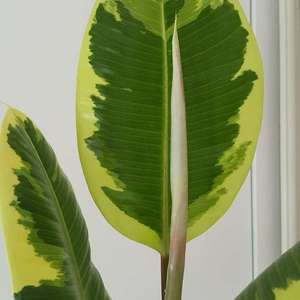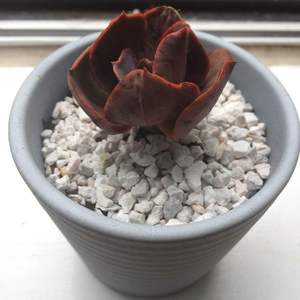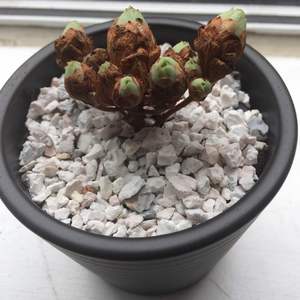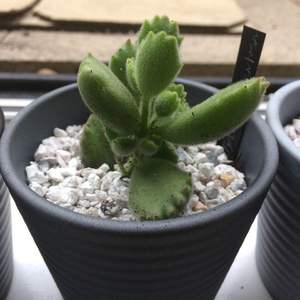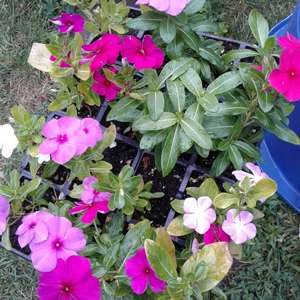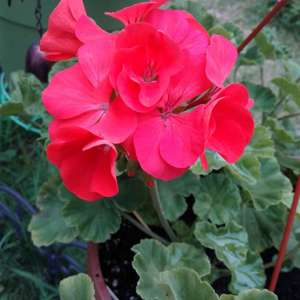文章
Miss Chen
2018年08月06日

Description: This perennial plant is a herbaceous vine that produces stems 2-4' long. The stems are usually glabrous, but are sometimes hairy where new growth occurs. The alternate leaves are 1-2' long and half as much across. They are often sagittate (arrowhead-shaped), but are variable and can assume other forms as well. Their margins are smooth and occasionally slightly ciliate. Long slender petioles connect the leaves with the stems. A slender flowering stalk may develop from the base of a petiole. This stalk occasionally branches and can produce 1-3 flowers. The corolla of a flower is funnelform in shape and up to 1" across; it is usually white, sometimes with light pink patterns. The 5 lobes of the corolla are very shallow and barely perceptible. Toward the throat of the corolla is a patch of yellow and the reproductive parts, consisting of 5 stamens and a pistil with a divided style. These reproductive parts are usually white, although the anthers may be pink or light purple in flowers with pink corollas. At the base of the flower, there are 5 green sepals that are much smaller than the corolla. Up to 1" below the base of a flower, there are a pair of small green bracts on the flowering stalk.
The blooming period can occur from late spring to early fall, and can span several months, even though individual flowers persist for only a single day, usually opening during the morning and closing by late afternoon. A hairless and well-rounded seed capsule about ¼" long replaces each flower; each 2-celled capsule contains 4 seeds. These dark seeds are 3-angled and oblong, but tapering somewhat at the ends. Each seed usually has 2 flat sides and 1 convex side; it is about 1/8" long. The root system consists of a slender taproot that branches frequently; it can extend 20' into the ground. Rhizomes are also produced in abundance, so that this plant often forms vegetative colonies.
Cultivation: Field Bindweed prefers full sunlight and mesic to dry conditions. It has considerable drought tolerance, and flourishes in poor soil that contains sand, gravel, or hardpan clay. It will also grow in moist fertile soil, but dislikes competition from taller plants. Eradication of this plant is difficult, as mechanical cultivation often spreads the rhizomes around, producing new plants. Because of the deep root system, it has been known to survive bulldozer operations. It can also persist in lawns, notwithstanding regular lawn-mowing. The application of broadleaf herbicides can be an effective control measure, if it is repeated as needed.

Range & Habitat: Field Bindweed is a common plant that has been reported from most counties in Illinois (see Distribution Map); it is native to Eurasia. This plant continues to spread and probably occurs in every county of the state. Habitats include lawns, gardens, fields, clay banks, areas along roadsides and railroads (including ballast), vacant lots, and miscellaneous waste areas. This plant occurs primarily in disturbed areas.
Faunal Associations: Mostly long-tongued bees visit the flowers for nectar, including bumblebees and little carpenter bees (Ceratina spp.). In addition, specialist bees that are attracted to funnelform flowers also visit the flowers for nectar, including Melitoma taurea (Mallow Bee) and Cemolobus ipomoeae (Morning Glory Bee). The adults and larvae of several tortoise beetles are known to feed destructively on the foliage of Field Bindweed, including Charidotella sexpunctata (Golden Tortoise Beetle), Chelymorpha cassidea (Argus Tortoise Beetle), Deloyala guttata (Mottled Tortoise Beetle), and Jonthonota nigripes (Black-legged Tortoise Beetle). Other beetles that feed on this plant include Chaetocnema confinis (Sweet Potato Flea Beetle) and Typophorus nigritus (Sweet Potato Leaf Beetle); see Clark et al. (2004). The larvae of a sawfly, Sphacophilus cellularis, feed on the leaves of bindweeds (Convolvulus spp.), as do the larvae of several moths, including Bedellia somnulentella (Morning Glory Leafminer), Spragueia leo (Common Spragueia), Emmelina monodactyla (Morning Glory Plume Moth), and Agrius cingulatus (Pink-spotted Hawk Moth); see Smith (2006), Cranshaw (2004), Covell (1984/2005), and Wagner (2005). Field Bindweed is not a preferred food source for mammalian herbivores because the foliage is mildly toxic. Furthermore, there have been reports of the rootstocks poisoning swine.
Photographic Location: Along a railroad in Urbana, Illinois. This plant is very common in the area.
Comments: Field Bindweed is an attractive plant while it is in flower, but it can be very aggressive and persistent. The flowers are smaller in size than Calystegia sepium (Hedge Bindweed) and Ipomoea pandurata (Wild Sweet Potato). Its leaves are sagittate, while the leaves of Ipomoea pandurata (Wild Sweet Potato) and Ipomoea lacunosa (Small White Morning Glory) are cordate.
The blooming period can occur from late spring to early fall, and can span several months, even though individual flowers persist for only a single day, usually opening during the morning and closing by late afternoon. A hairless and well-rounded seed capsule about ¼" long replaces each flower; each 2-celled capsule contains 4 seeds. These dark seeds are 3-angled and oblong, but tapering somewhat at the ends. Each seed usually has 2 flat sides and 1 convex side; it is about 1/8" long. The root system consists of a slender taproot that branches frequently; it can extend 20' into the ground. Rhizomes are also produced in abundance, so that this plant often forms vegetative colonies.
Cultivation: Field Bindweed prefers full sunlight and mesic to dry conditions. It has considerable drought tolerance, and flourishes in poor soil that contains sand, gravel, or hardpan clay. It will also grow in moist fertile soil, but dislikes competition from taller plants. Eradication of this plant is difficult, as mechanical cultivation often spreads the rhizomes around, producing new plants. Because of the deep root system, it has been known to survive bulldozer operations. It can also persist in lawns, notwithstanding regular lawn-mowing. The application of broadleaf herbicides can be an effective control measure, if it is repeated as needed.

Range & Habitat: Field Bindweed is a common plant that has been reported from most counties in Illinois (see Distribution Map); it is native to Eurasia. This plant continues to spread and probably occurs in every county of the state. Habitats include lawns, gardens, fields, clay banks, areas along roadsides and railroads (including ballast), vacant lots, and miscellaneous waste areas. This plant occurs primarily in disturbed areas.
Faunal Associations: Mostly long-tongued bees visit the flowers for nectar, including bumblebees and little carpenter bees (Ceratina spp.). In addition, specialist bees that are attracted to funnelform flowers also visit the flowers for nectar, including Melitoma taurea (Mallow Bee) and Cemolobus ipomoeae (Morning Glory Bee). The adults and larvae of several tortoise beetles are known to feed destructively on the foliage of Field Bindweed, including Charidotella sexpunctata (Golden Tortoise Beetle), Chelymorpha cassidea (Argus Tortoise Beetle), Deloyala guttata (Mottled Tortoise Beetle), and Jonthonota nigripes (Black-legged Tortoise Beetle). Other beetles that feed on this plant include Chaetocnema confinis (Sweet Potato Flea Beetle) and Typophorus nigritus (Sweet Potato Leaf Beetle); see Clark et al. (2004). The larvae of a sawfly, Sphacophilus cellularis, feed on the leaves of bindweeds (Convolvulus spp.), as do the larvae of several moths, including Bedellia somnulentella (Morning Glory Leafminer), Spragueia leo (Common Spragueia), Emmelina monodactyla (Morning Glory Plume Moth), and Agrius cingulatus (Pink-spotted Hawk Moth); see Smith (2006), Cranshaw (2004), Covell (1984/2005), and Wagner (2005). Field Bindweed is not a preferred food source for mammalian herbivores because the foliage is mildly toxic. Furthermore, there have been reports of the rootstocks poisoning swine.
Photographic Location: Along a railroad in Urbana, Illinois. This plant is very common in the area.
Comments: Field Bindweed is an attractive plant while it is in flower, but it can be very aggressive and persistent. The flowers are smaller in size than Calystegia sepium (Hedge Bindweed) and Ipomoea pandurata (Wild Sweet Potato). Its leaves are sagittate, while the leaves of Ipomoea pandurata (Wild Sweet Potato) and Ipomoea lacunosa (Small White Morning Glory) are cordate.
0
0
文章
Miss Chen
2018年08月01日

Description: This plant is a summer annual that becomes 3-18" tall; it is low and spreading, but not prostrate. The stems are pinkish red, round, and hairless, except for a few fine hairs on new growth. The opposite leaves are up to 2" long and ¾" across. They are oblong, with short petioles and margins that are smooth or irregularly serrate. The lower surface of each leaf is light green, while the upper surface may have a red blotch in the middle. A few fine hairs may occur near the base of eachStems, Leaves, & Flowers leaf. The inflorescence consists of a small cyathium on a straight pedicel. Usually, several cyathia develop near the ends of each major stem when a plant is mature. A cyathium is a small cup-like structure containing the pistillate flower and one or more staminate flowers, which have neither true petals nor sepals. It is initially green, but often turns red in bright sunlight. On this particular species, the cyathium has 4 tiny petal-like appendages that are bright white. Eventually, a round tripartite fruit develops from the cyathium on a short stalk; it often turns red in bright sunlight as well. This fruit is noticeably larger than the flowers. The blooming period is mid-summer to fall, lasting about 1-2 months. There is no noticeable floral scent. The root system consists of a slender central taproot.
Cultivation: The preference is full sunlight, dry conditions, and poor soil. The soil can contain significant amounts of gravel, sand, or clay. Foliar disease rarely bothers the leaves, and drought resistance is excellent. This plant can reseed itself readily in sunny open areas.
Range & Habitat: The native Nodding Spurge is a common plant that occurs in nearly every county of Illinois (see Distribution Map). Habitats include dry upland areas of prairies, clay prairies, gravel prairies, thickets, openings in upland woodlands, fields and pastures (whether abandoned or still in use), areas along roadsides and railroads, poorly maintained lawns and gardens, and miscellaneous waste areas. This plant prefers disturbed open areas and it is somewhat weedy. This plant seems to be more common in rural than urban areas, possibly because of its intolerance to herbicides and frequent mowing of lawns.
Faunal Associations: The tiny flowers occasionally attract small bees, Syrphid flies, and wasps. These insects seek nectar primarily. The seeds are consumed by the Mourning Dove and Greater Prairie Chicken, and to a lesser extent by the Bobwhite and Horned Lark. The Wild Turkey has been known to eat the foliage, developing buds, and fruits, apparently without ill effects. Mammalian herbivores rarely eat this plant because of the poisonous white latex in the stems and foliage.
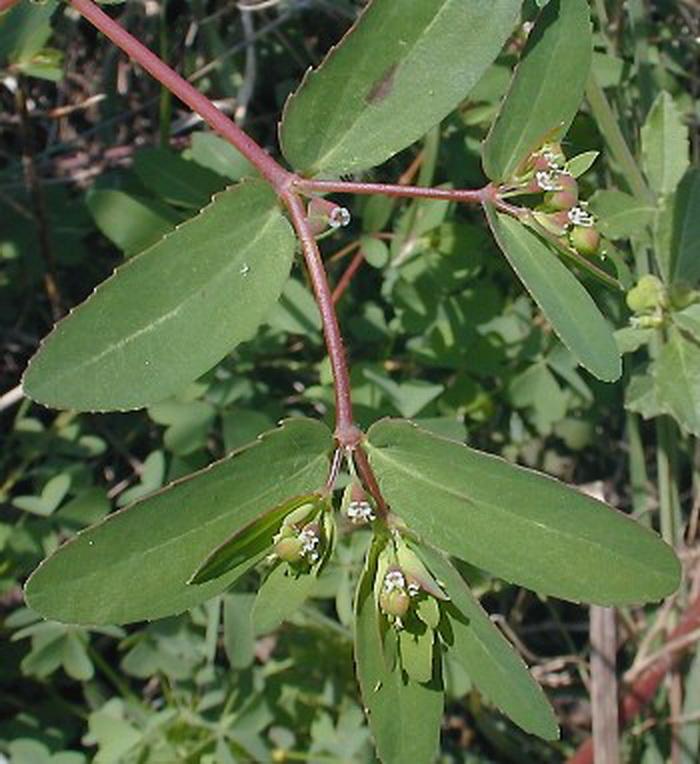
Photographic Location: The photographs were taken at the Windsor Road Prairie in Champaign, Illinois. Some flowers are in bloom in one of the photographs as their stamens are clearly visible.
Comments: The Nodding Spurge can be readily distinguished from other Chamaesyce spp. by its more erect habit, larger leaves, and mostly hairless stems. Several scientific names have been applied to the Nodding Spurge in the past, including Chamaesyce maculata, Euphorbia maculata, and Euphorbia preslii. Sometimes the entire plant will turn reddish green in response to strong sunlight and dry conditions.
Cultivation: The preference is full sunlight, dry conditions, and poor soil. The soil can contain significant amounts of gravel, sand, or clay. Foliar disease rarely bothers the leaves, and drought resistance is excellent. This plant can reseed itself readily in sunny open areas.
Range & Habitat: The native Nodding Spurge is a common plant that occurs in nearly every county of Illinois (see Distribution Map). Habitats include dry upland areas of prairies, clay prairies, gravel prairies, thickets, openings in upland woodlands, fields and pastures (whether abandoned or still in use), areas along roadsides and railroads, poorly maintained lawns and gardens, and miscellaneous waste areas. This plant prefers disturbed open areas and it is somewhat weedy. This plant seems to be more common in rural than urban areas, possibly because of its intolerance to herbicides and frequent mowing of lawns.
Faunal Associations: The tiny flowers occasionally attract small bees, Syrphid flies, and wasps. These insects seek nectar primarily. The seeds are consumed by the Mourning Dove and Greater Prairie Chicken, and to a lesser extent by the Bobwhite and Horned Lark. The Wild Turkey has been known to eat the foliage, developing buds, and fruits, apparently without ill effects. Mammalian herbivores rarely eat this plant because of the poisonous white latex in the stems and foliage.

Photographic Location: The photographs were taken at the Windsor Road Prairie in Champaign, Illinois. Some flowers are in bloom in one of the photographs as their stamens are clearly visible.
Comments: The Nodding Spurge can be readily distinguished from other Chamaesyce spp. by its more erect habit, larger leaves, and mostly hairless stems. Several scientific names have been applied to the Nodding Spurge in the past, including Chamaesyce maculata, Euphorbia maculata, and Euphorbia preslii. Sometimes the entire plant will turn reddish green in response to strong sunlight and dry conditions.
0
0
文章
Miss Chen
2018年07月26日

Description: This plant is a summer annual about 3-9' tall. It is unbranched or little branched. The stout central stem is light green; where new growth occurs, this stem is more or less pubescent, but it becomes less hairy with age. The lower leaves are often opposite, while the upper leaves are alternate. These leaves are palmately compound with 3-9 leaflets (usually there are 5-7 leaflets). On large plants, these leaves can span up to 10" long and across (excluding the petioles), but they are half this size on smaller plants. While the lower leaves have long slender petioles, the upper leaves are nearly sessile. These petioles are more or less pubescent and occasionally reddish green. Each leaflet is narrowly ovate and coarsely serrated along the margins; the middle leaflets are larger in size than the lateral leaflets. The upper surface of each leaflet is dark green and sparsely pubescent.
Hemp is dioecious with both male and female plants. The male plants produce both axillary and terminal panicles of male flowers. These panicles are up to 1' long; they have small leafy bracts and pubescent stalks. Each male flower is about 1/8" (3 mm.) across, consisting of 5 sepals, 5 stamens with large anthers, and no petals. The oblong or lanceolate sepals are initially green, but they become cream or pale yellow with maturity. After these flowers have shed their pollen, the foliage of the male plant soon turns yellow and withers away. The female plants produce short axillary spikes of female flowers; these spikes are about 1" long and covered with glandular hairs. Each female flower is about 1/8" (3 mm.) long, consisting of a single sepal, an ovary with two styles, and no petals. The sepal wraps around the ovary, forming a beak at its apex; the 2 styles are exerted from this beak. The surface of the sepal is green and covered with glandular hairs that exude a characteristic odor when they are rubbed. At the base of each female flower, there is a single green bract that is lanceolate and longer than the flower. There are small leaves and other bracts along the spike as well.

The blooming period occurs from mid-summer to early fall and lasts about 1-2 months. Pollination is by agency of the wind. Upon maturity, the female flowers turn brown, but the foliage of female plants remains green until the fall. Each female flower is replaced by an achene containing a single large seed. The root system consists of a branched taproot. This plant often forms colonies at favorable sites.
Cultivation: The preference is full sun, moist conditions, and a fertile loamy soil. Mesic conditions and other kinds of soil are also tolerated, but the size of plants will be smaller. Hemp is little bothered by pests and disease. It tolerates occasional flooding.

Range & Habitat: Hemp occurs occasionally in central and northern Illinois, while in the southern portion of the state it is uncommon or absent (see Distribution Map). Hemp is native to central Asia and it was introduced to the United States for agricultural purposes. Habitats include borders of floodplain woodlands, borders of low-lying fields, weedy meadows along rivers, fence rows, and roadside ditches. Occasionally, it is cultivated illegally in backyards and fields. This plant is found primarily in disturbed habitats.
Faunal Associations: There is little information about floral-faunal relationships for Hemp. The wind-pollinated flowers don't attract many insect pollinators. Mammalian herbivores avoid browsing on hemp when other plants are available.
Photographic Location: A roadside ditch in Champaign, Illinois.

Comments: Hemp has been cultivated in the United States since colonial times. The fibers of the central stem are quite strong; they have been used in making rope, paper, clothing, and other products. The foliage, flowers, and seeds of female plants contain chemicals with medicinal and recreational properties. However, since World War II, it has been illegal in Illinois and other areas of the United States to cultivate hemp. The industrial form of this plant is Cannabis sativa sativa (Hemp), while the medicinal and recreational form is Cannabis sativa indica (Marijuana). It is usually the industrial form of this plant that is encountered in the wild; it has a more robust habit of growth and contains lower levels of chemicals with medicinal and recreational properties. Hemp has a unique appearance and is easy to distinguish from other species of plants. A small specimen of Hemp superficially resembles some Potentilla spp. (Cinquefoils), especially Potentilla recta (Sulfur Cinquefoil), because of the similarity of their palmate leaves. However, the leaflets of Hemp are more elongated and tapered at their tips than Sulfur Cinquefoil. Furthermore, the flowers of Cinquefoils have 5 conspicuous petals that are white or yellow, like many other members of the Rose family, while the flowers of Hemp are devoid of petals.
Hemp is dioecious with both male and female plants. The male plants produce both axillary and terminal panicles of male flowers. These panicles are up to 1' long; they have small leafy bracts and pubescent stalks. Each male flower is about 1/8" (3 mm.) across, consisting of 5 sepals, 5 stamens with large anthers, and no petals. The oblong or lanceolate sepals are initially green, but they become cream or pale yellow with maturity. After these flowers have shed their pollen, the foliage of the male plant soon turns yellow and withers away. The female plants produce short axillary spikes of female flowers; these spikes are about 1" long and covered with glandular hairs. Each female flower is about 1/8" (3 mm.) long, consisting of a single sepal, an ovary with two styles, and no petals. The sepal wraps around the ovary, forming a beak at its apex; the 2 styles are exerted from this beak. The surface of the sepal is green and covered with glandular hairs that exude a characteristic odor when they are rubbed. At the base of each female flower, there is a single green bract that is lanceolate and longer than the flower. There are small leaves and other bracts along the spike as well.

The blooming period occurs from mid-summer to early fall and lasts about 1-2 months. Pollination is by agency of the wind. Upon maturity, the female flowers turn brown, but the foliage of female plants remains green until the fall. Each female flower is replaced by an achene containing a single large seed. The root system consists of a branched taproot. This plant often forms colonies at favorable sites.
Cultivation: The preference is full sun, moist conditions, and a fertile loamy soil. Mesic conditions and other kinds of soil are also tolerated, but the size of plants will be smaller. Hemp is little bothered by pests and disease. It tolerates occasional flooding.

Range & Habitat: Hemp occurs occasionally in central and northern Illinois, while in the southern portion of the state it is uncommon or absent (see Distribution Map). Hemp is native to central Asia and it was introduced to the United States for agricultural purposes. Habitats include borders of floodplain woodlands, borders of low-lying fields, weedy meadows along rivers, fence rows, and roadside ditches. Occasionally, it is cultivated illegally in backyards and fields. This plant is found primarily in disturbed habitats.
Faunal Associations: There is little information about floral-faunal relationships for Hemp. The wind-pollinated flowers don't attract many insect pollinators. Mammalian herbivores avoid browsing on hemp when other plants are available.
Photographic Location: A roadside ditch in Champaign, Illinois.

Comments: Hemp has been cultivated in the United States since colonial times. The fibers of the central stem are quite strong; they have been used in making rope, paper, clothing, and other products. The foliage, flowers, and seeds of female plants contain chemicals with medicinal and recreational properties. However, since World War II, it has been illegal in Illinois and other areas of the United States to cultivate hemp. The industrial form of this plant is Cannabis sativa sativa (Hemp), while the medicinal and recreational form is Cannabis sativa indica (Marijuana). It is usually the industrial form of this plant that is encountered in the wild; it has a more robust habit of growth and contains lower levels of chemicals with medicinal and recreational properties. Hemp has a unique appearance and is easy to distinguish from other species of plants. A small specimen of Hemp superficially resembles some Potentilla spp. (Cinquefoils), especially Potentilla recta (Sulfur Cinquefoil), because of the similarity of their palmate leaves. However, the leaflets of Hemp are more elongated and tapered at their tips than Sulfur Cinquefoil. Furthermore, the flowers of Cinquefoils have 5 conspicuous petals that are white or yellow, like many other members of the Rose family, while the flowers of Hemp are devoid of petals.
0
0
文章
Miss Chen
2018年07月22日

Asparagus (Asparagus officinalis) spears are the new shoots of asparagus plants that grow in spring. Asparagus grows from seed, and plants live 20 to 30 years in good growing conditions. In U.S. Department of Agriculture plant hardiness zones 4 through 8, asparagus is hardy, and plants grow 3 to 5 feet tall. Young asparagus shoots can sometimes cause skin irritation, and the red berries produced by female asparagus plants are poisonous.

Asparagus Roots
Asparagus root systems are called crowns. Asparagus growers start plants from seed and sell asparagus crowns that are one or two years old. Each crown has a central bud, and thick roots spreading out sideways. Shoots grow from the central bud.
Asparagus roots grow horizontally, not vertically. Over time, they form a wide, tuberous mat. When growing asparagus, it's important to select a growing area that can be left undisturbed for years. After planting, asparagus roots should not be moved.
Asparagus Plants
Asparagus plants develop many branched stems, which die down at the end of the growing season. Shoots develop daily on asparagus plants in spring. Newly planted crowns can produce shoots five or six weeks after planting. After a crop of young shoots is harvested, later shoots are allowed to develop so the plants can store energy for next year's crop.
As shoots grow, they produce many stems, which branch off into smaller stems. Rings of thin, hairlike structures appear on the smaller stems, which give mature asparagus plants a feathery appearance. True asparagus leaves are scalelike and tiny, and they can be seen most easily on new shoots. Asparagus stems turn yellow and wither in fall, often after the first frost.
Female and Male Asparagus
Asparagus plants are female or male. Female plants produce more stems than male plants, but the stems are thinner. Female asparagus plants also produce bright red summer berries, which contain the plant's seeds. Seeds from fallen berries can create problems the following year, when the asparagus bed becomes overrun with asparagus seedlings.
Newer varieties of asparagus are mostly male or all male plants. Male plants put all their energy into shoot production and don't waste energy on producing fruit. They also don't create problems with asparagus seedlings.

New Varieties
New asparagus varieties offer disease resistance and a range of colors. Asparagus "Jersey Knight" (Asparagus officinalis "Jersey Knight") is resistant to rust, fusarium wilt, and root and crown rot. Asparagus "Purple Passion" (Asparagus "Purple Passion") features purple spears, though these turn green when cooked. "Jersey Knight" and "Purple Passion" are hardy in USDA zones 3 through 10.
Asparagus "Jersey Giant" (Asparagus officinalis "Jersey Giant"), which is hardy in USDA zones 4 through 7, produces green spears with purple bracts. Bracts are leaflike structures. "Jersey Giant" produces two to three times more spears than some older varieties.

Asparagus Roots
Asparagus root systems are called crowns. Asparagus growers start plants from seed and sell asparagus crowns that are one or two years old. Each crown has a central bud, and thick roots spreading out sideways. Shoots grow from the central bud.
Asparagus roots grow horizontally, not vertically. Over time, they form a wide, tuberous mat. When growing asparagus, it's important to select a growing area that can be left undisturbed for years. After planting, asparagus roots should not be moved.
Asparagus Plants
Asparagus plants develop many branched stems, which die down at the end of the growing season. Shoots develop daily on asparagus plants in spring. Newly planted crowns can produce shoots five or six weeks after planting. After a crop of young shoots is harvested, later shoots are allowed to develop so the plants can store energy for next year's crop.
As shoots grow, they produce many stems, which branch off into smaller stems. Rings of thin, hairlike structures appear on the smaller stems, which give mature asparagus plants a feathery appearance. True asparagus leaves are scalelike and tiny, and they can be seen most easily on new shoots. Asparagus stems turn yellow and wither in fall, often after the first frost.
Female and Male Asparagus
Asparagus plants are female or male. Female plants produce more stems than male plants, but the stems are thinner. Female asparagus plants also produce bright red summer berries, which contain the plant's seeds. Seeds from fallen berries can create problems the following year, when the asparagus bed becomes overrun with asparagus seedlings.
Newer varieties of asparagus are mostly male or all male plants. Male plants put all their energy into shoot production and don't waste energy on producing fruit. They also don't create problems with asparagus seedlings.

New Varieties
New asparagus varieties offer disease resistance and a range of colors. Asparagus "Jersey Knight" (Asparagus officinalis "Jersey Knight") is resistant to rust, fusarium wilt, and root and crown rot. Asparagus "Purple Passion" (Asparagus "Purple Passion") features purple spears, though these turn green when cooked. "Jersey Knight" and "Purple Passion" are hardy in USDA zones 3 through 10.
Asparagus "Jersey Giant" (Asparagus officinalis "Jersey Giant"), which is hardy in USDA zones 4 through 7, produces green spears with purple bracts. Bracts are leaflike structures. "Jersey Giant" produces two to three times more spears than some older varieties.
0
0
文章
Miss Chen
2018年07月20日

Baby red potatoes are a thin-skinned variety with a creamy texture and mild flesh. They are also called new potatoes and can be steamed, boiled or roasted. While small--about 1 to 3 inches long--they contain the same nutrients as a full-sized potato. All potatoes need loose (to a depth of 3 or 4 feet), well-drained soil with a pH of 5.2 to 6.8 for proper tuber development. Potatoes are plagued with a host of insect pests and bacterial diseases. Keeping your soil healthy by adding compost and rotating crops will minimize damage to your potato plants.

Step 1
Choose a spot with full sun in an area of the garden you have not used to grow potatoes, tomatoes, peppers or eggplants in three years. Do this the fall before planting potatoes.
Step 2
Cover the area you've chosen with compost, and work the compost into the soil to a depth of 6 inches. Baby red potatoes are planted in early spring as soon as the soil warms up to a daytime temperature of 51 degrees.
Step 3
In the spring, when you're ready to plant, cut the certified red seed potatoes into chunks, making sure each chunk has two to three "eyes".
Step 4
Plant your potato chunks in hills with two to three pieces per hill. Cluster your potato pieces together, and cover them with 3 to 4 inches of soil. The centers of the hills should be 1 foot apart. As an alternative, you can make a furrow 3 inches deep. Drop your eyes into the furrow 10 to 12 inches apart. Space the rows 24 inches apart.

Step 5
When the potato plant sprouts, begin "hilling" soil or compost around the plant. When the plant reaches 3 to 4 inches high, cover half of the plant with soil. When the plant grows another 3 to 4 inches, cover half of the new growth with soil. Continue to do that until the plant is growing out of a mound of soil 4 to 6 inches high. Hilling the soil prevents tubers from being exposed to the sun. Once tubers are exposed to the sun, they turn green and develop a toxin. Green tubers need to be disposed of.
Step 6
Mulch between rows and hills. The mulch reduces weed growth and retains moisture.
Step 7
When your red potatoes have developed their first set of true leaves, spray them with a foliar spray made of fish emulsion or seaweed. The foliar spray provides the nutrients your potato plants need to produce tubers and stay healthy through insect attacks and disease. Spray once a week until all the red potato plant flowers are in full bloom.
Step 8
When your red potato plants have sprouted, cover them with a floating row cover. The floating row cover allows sunlight and water to reach the potato plants but keeps insect pests from reaching the plants. You may remove the floating row covers when the plants begin to flower.
Step 9
Water your plants every other day. The soil should be moist, but you need to avoid leaving standing water.
Step 10
Start checking potato growth in late spring. Harvest new potatoes when they are between 1 and 2 inches long by digging gently around the potato plants and using a sharp knife to cut the potatoes cleanly away from the roots. Allow smaller potatoes to continue to grow before harvesting to extend the harvesting season.
Step 11
When you have harvested all the tubers on a potato plant, pull the plant up and add it to your compost pile.

Step 1
Choose a spot with full sun in an area of the garden you have not used to grow potatoes, tomatoes, peppers or eggplants in three years. Do this the fall before planting potatoes.
Step 2
Cover the area you've chosen with compost, and work the compost into the soil to a depth of 6 inches. Baby red potatoes are planted in early spring as soon as the soil warms up to a daytime temperature of 51 degrees.
Step 3
In the spring, when you're ready to plant, cut the certified red seed potatoes into chunks, making sure each chunk has two to three "eyes".
Step 4
Plant your potato chunks in hills with two to three pieces per hill. Cluster your potato pieces together, and cover them with 3 to 4 inches of soil. The centers of the hills should be 1 foot apart. As an alternative, you can make a furrow 3 inches deep. Drop your eyes into the furrow 10 to 12 inches apart. Space the rows 24 inches apart.

Step 5
When the potato plant sprouts, begin "hilling" soil or compost around the plant. When the plant reaches 3 to 4 inches high, cover half of the plant with soil. When the plant grows another 3 to 4 inches, cover half of the new growth with soil. Continue to do that until the plant is growing out of a mound of soil 4 to 6 inches high. Hilling the soil prevents tubers from being exposed to the sun. Once tubers are exposed to the sun, they turn green and develop a toxin. Green tubers need to be disposed of.
Step 6
Mulch between rows and hills. The mulch reduces weed growth and retains moisture.
Step 7
When your red potatoes have developed their first set of true leaves, spray them with a foliar spray made of fish emulsion or seaweed. The foliar spray provides the nutrients your potato plants need to produce tubers and stay healthy through insect attacks and disease. Spray once a week until all the red potato plant flowers are in full bloom.
Step 8
When your red potato plants have sprouted, cover them with a floating row cover. The floating row cover allows sunlight and water to reach the potato plants but keeps insect pests from reaching the plants. You may remove the floating row covers when the plants begin to flower.
Step 9
Water your plants every other day. The soil should be moist, but you need to avoid leaving standing water.
Step 10
Start checking potato growth in late spring. Harvest new potatoes when they are between 1 and 2 inches long by digging gently around the potato plants and using a sharp knife to cut the potatoes cleanly away from the roots. Allow smaller potatoes to continue to grow before harvesting to extend the harvesting season.
Step 11
When you have harvested all the tubers on a potato plant, pull the plant up and add it to your compost pile.
0
0



